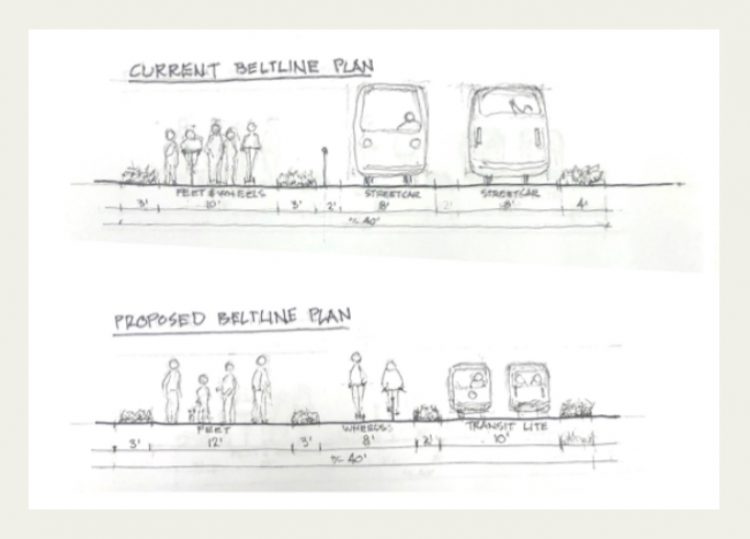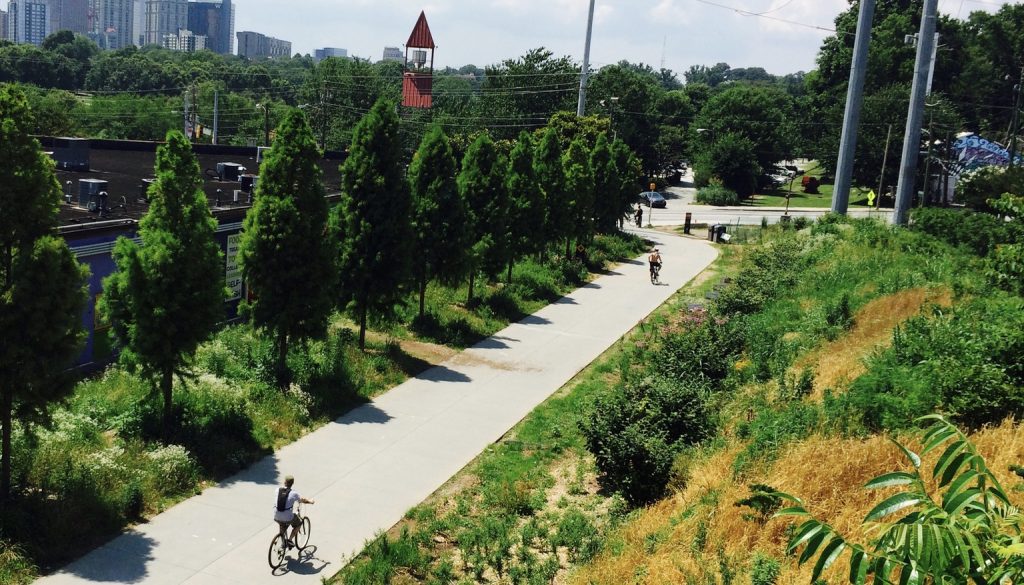Environment
Short Takes
Georgia’s new data center rule increases local controlDecember 1, 2025

By Mike Dobbins
Jan. 10 – The BeltLIne trail on the east side has become a treasured community asset. It is likely to gain in popularity as other segments underway hook up with it. Its very popularity, however, has brought stresses not anticipated in the BeltLine’s current long-term plan.
Trail functionality, along with safety and pleasure, are diminished by the growing crush of multimodal users. Thus foot travelers – walkers, joggers, wheel chairs, and dogs – are in rising conflict with wheel travelers – bicycles, scooters, and skateboards, some motorized and some not. So, a problem.
It is time to update the overall plan to respond to people’s needs, desires, and changing community values. It makes no sense to curtail what works so well for the BeltLine by holding to the current allocation of its right-of-way space (ROW). In short, reallocate that ROW space to widen the foot travelers’ space, to separate the wheel travelers’ space, and to reconceptualize the transit space. The cross-section diagrams below illustrate the current allocations and the suggested reallocations.
The big moves of the reallocation are to separate the foot travelers from the wheel travelers, giving ample room for each, and to replace the two-track streetcar transit system with a “transit lite” system, still adequate for meeting transit demand. The reallocation further provides space for respecting the use and location of the existing activities flanking the trail, for landscaping, and for placing the three main travel ways at different grades where that might be desirable.
The “transit lite” approach deserves further explanation. Presently, the two-track streetcar plan’s flaws are ever more evident as the years roll by. These include cost, lack of funding, technical barriers, time to deliver, changing travel technologies and behaviors, but naming just one is sufficient explanation: The streetcar doesn’t get enough people from where they are to where they need or want to go. The fundamental metric for success for any transit system is ridership. Lacking the origin-destination nexus necessary to generate sufficient ridership, the proposed transit lite approach should meet transit demand for the foreseeable future.
Transit lite anticipates using small, motorized vehicles, seating two to eight people side by side. Vehicles operate in a track-free, shared ROW. The narrower travel way frees up the space necessary for more foot traffic and for separating wheel traffic. The vehicles can cue up from place to place. Prospective passengers can gain access in a way similar to smart carts at the airport. Finally, the BeltLine can begin to implement the proposed plan tomorrow, and while they’re at it save tens of millions of dollars.
Why not?


0